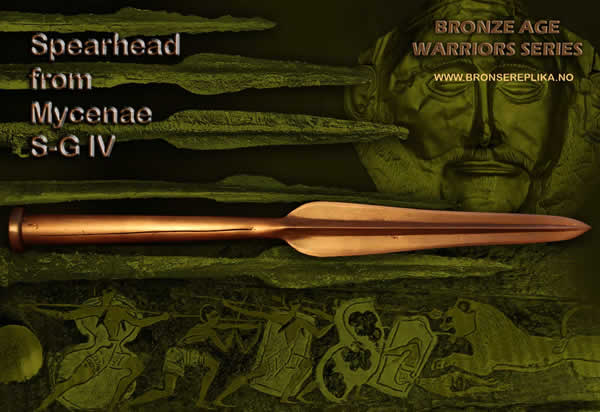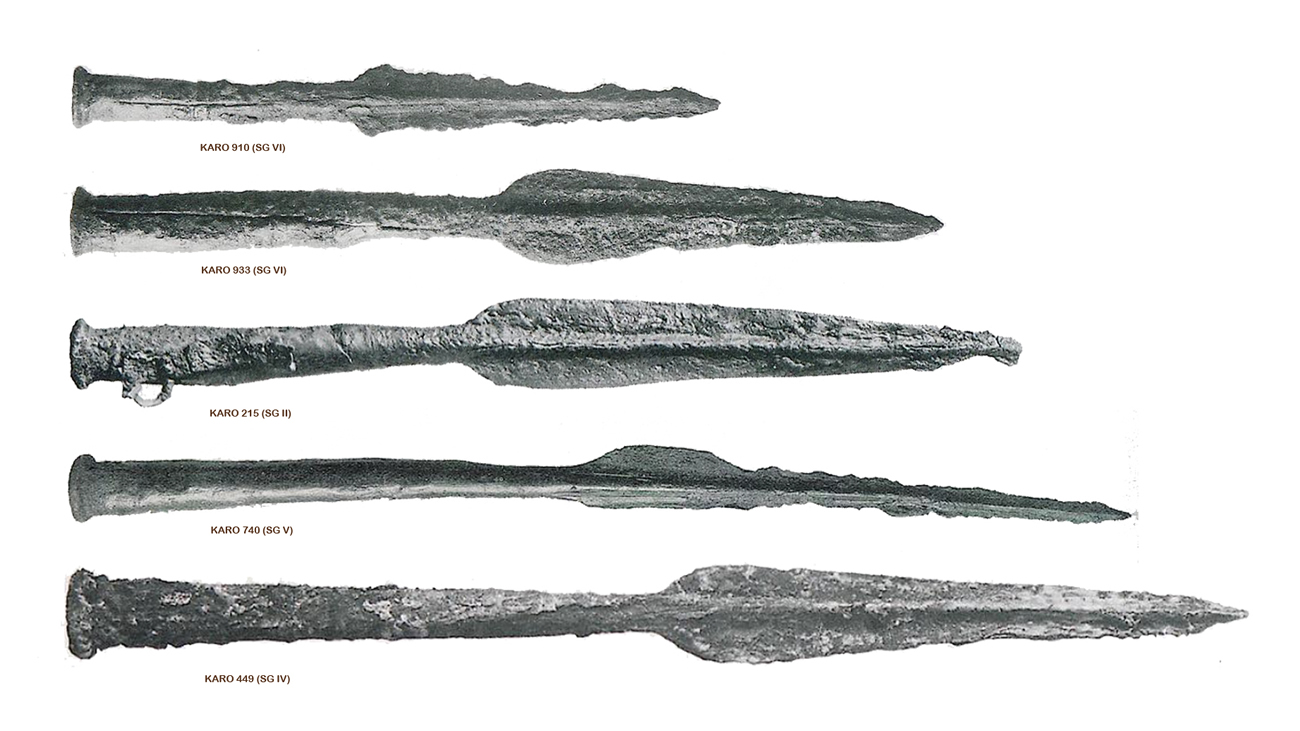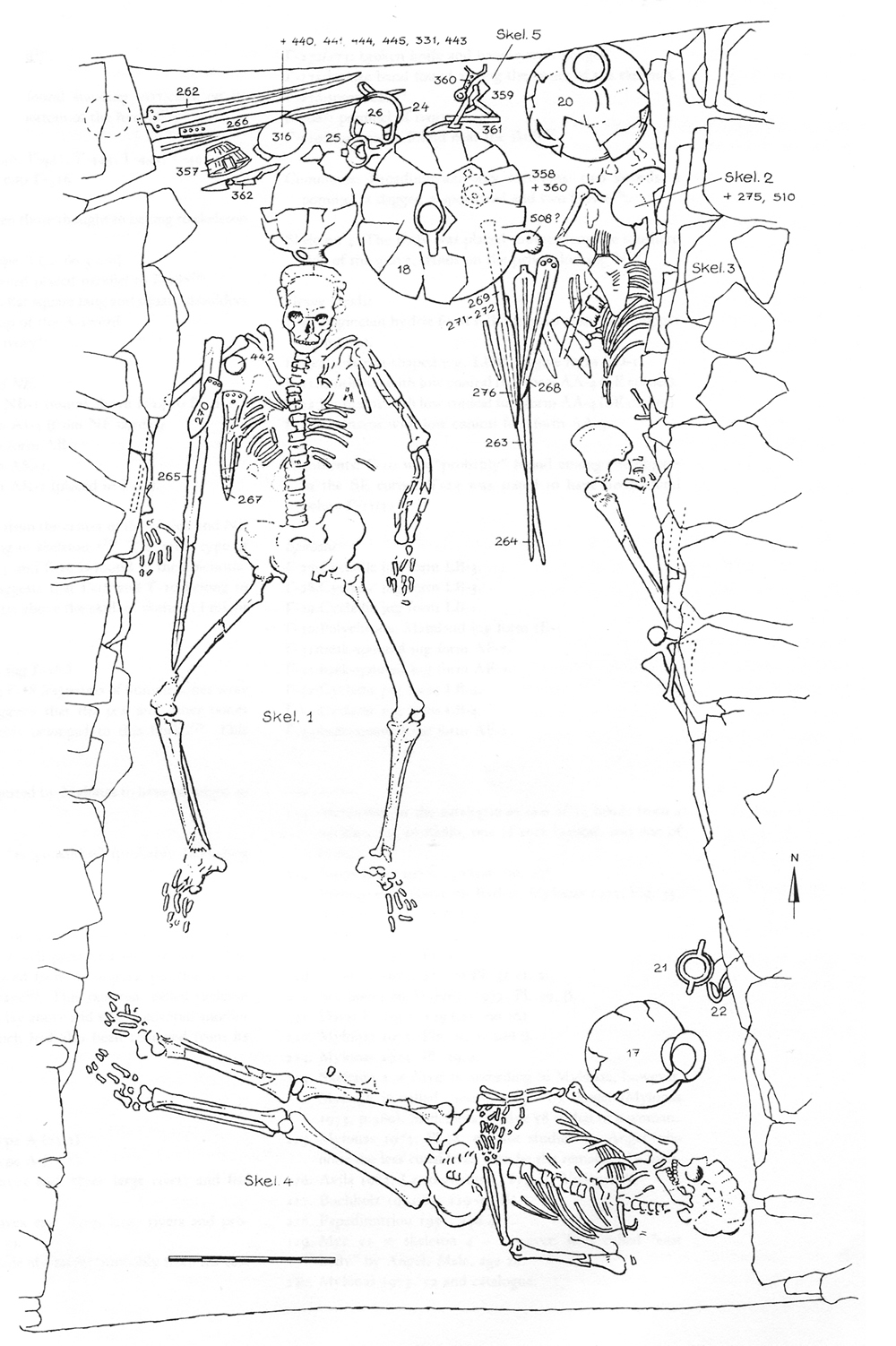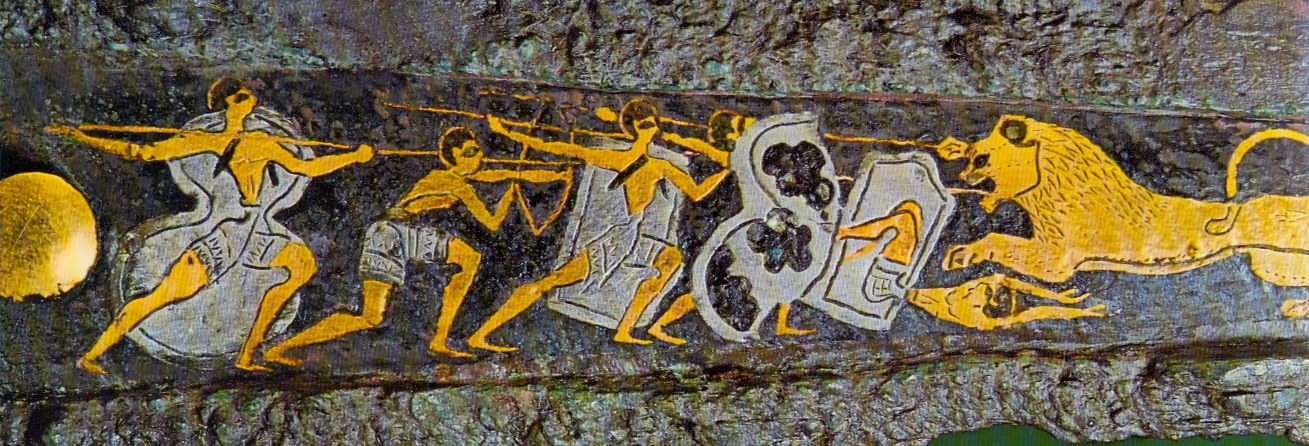
The first socketed spearheads on the Aegean mainland
The large spearheads from the Mycenaean shaft-graves represent the first socketed spearheads on the Aegean mainland, probably also in the entire Aegean (Avila type II; Höckmann group C). The Mycenaeans did not invent the socketed spearheads. The type with an "open" or "split" socket had an earlier appearance in the forest-steppe area of Volga-Kama (Fatyanovo-Balanovo culture, before 2000 B.C.) and Ural (Sintashta culture, before 2000 B.C.), in the Transcaucasus (Trialeti culture, before 2000 B.C.) and in the Near East (before 2000 B.C.). The use of a separate collar at the lower end of the socket also had been invented elsewhere. What separated the early Mycenaean spearheads on the global scene c. 1650 B.C. was their size and uniform appearance. In the cross-section of the blade they seem related to the contemporary type A swords. On the other hand, while the swords very often show complex midribs and gold embellished handles, and quite a few scholars have questioned their functionality since their discovery, the spearheads give an impression of simplicity and brute functionality.

Drawing of the original spearhead from shaft-grave IV (from Avila 1983: nr. 12).

Avila type II spearheads from Circle A at Mycenae, ranging from 32 cm to 60 cm (assembled from Karo 1930/33).
Similar spearheads were also found in Circle B at Mycenae. This burial site was established earlier than Circle A. The spearhead from S-G N, a burial that belongs in Middle Helladic IIIB (according to Dietz 1991), moves the presence of these spearheads to 1750-1700 B.C. This is in fact the only spearhead with a complex cross-section from the shaft-graves at Mycenae (two narrow, raised ribs on each side of the mid-rib).

Spearhead from MH IIIB, Circle B, S-G N (from Avila 1983: nr. 10).

The large spearheads of Höckmann type C/Avila type II also appeared in grave circle B at Mycenae, here seen in situ in S-G Gamma, 51, 5cm long (from Mylonas 1964).
The very same burial that yielded the replicated spearhead, also yielded two scenes with large spears in use. One is the hunting scene on the famous Lion-Hunt dagger, the other from a silver rhyton shows warriors with figure-of-eight shields fighting warriors with rectangular shields, both parties wielding long spears. Both these scenes show spearheads on long shaft used in a "high-position"

Hunting scene with long spears, from Mychenae shaft-grave IV.

Scene from silver rhyton from Mycenae shaft-grave IV, here in a reconstructed and straightened image (from http://antiquatedantiquarian.blogspot.no)
When it comes to the origin of the Mycenaean spearhead, I believe that it was a novelty inspired by spearheads from Byblos and Ugarit in the Levant. Here they met quite large specimens, and here sometimes a collar/ring was used. On this basis they created their own large and robust type of spearhead. It is also at Byblos and Ugarit we find the best examples of the use of complex niello and inlay techniques (on the kopeshes/sickle-swords group II), comparable to those seen on the Lion-Hunt dagger and other objects in the shaft-graves.
Litterature:
Avila, R. A. J. 1983: Bronzene Lanzen- und Pfeilspitzen der griechischen Spätbronzezeit. PBF V.1. München.
Dietz, S. 1991: The Argolid at the transition to the Mycenaean age : studies in the chronology and cultural development in the shaft grave period. National Museum of Denmark. Copenhagen.
Höckmann, O. 1980: Lanze und speer im spätminoischen und Mykenischen Griechenland. In: Jahrbuch RGZM 27 (13-158).
Karo, G. 1930/33: Die Schachtgräber von Mykenai. Text und Tafeln. München.
Mylonas, G. E. 1964: Grave circle B of Mycenae. Studies in Mediterranean archaeology 7. Lund.
|